I am using a USB D/A converter to drive a high-voltage op-amp with a signal between 0 and 3V at 10 kHz. The D/A I am using is capable of outputting between -10 and +10 and unfortunately seems to always output a 1 ms long glitch of -10.7V around 20-30 ms before the signal generation begins.
Although I am trying to get the vendor to supply a software fix, I want a hardware solution to ensure the output can't drop below 0V even in the event of a software glitch.
I am aware of diode clamping circuits but the lowest voltage Schottky I can find is 220 mV with the exception of a very strange diode that seems to have a built-in FET (SM74611), which I'm guessing is not meant for this application.
I would like to keep the output above -100 mV and preferably above -10 mV. Are there any other "passive" solutions I'm overlooking that could accomplish this or do I have to go with something active like an op-amp?
If active is the only way, can someone suggest a suitable circuit?


